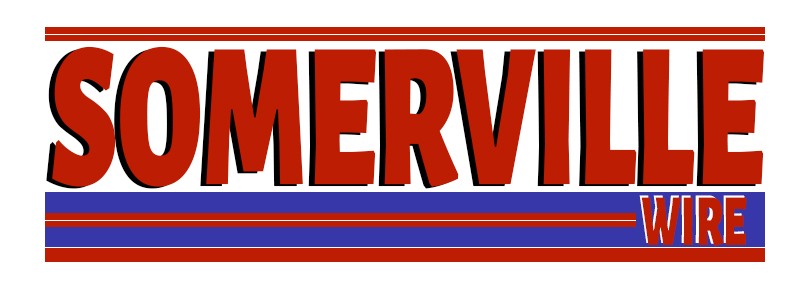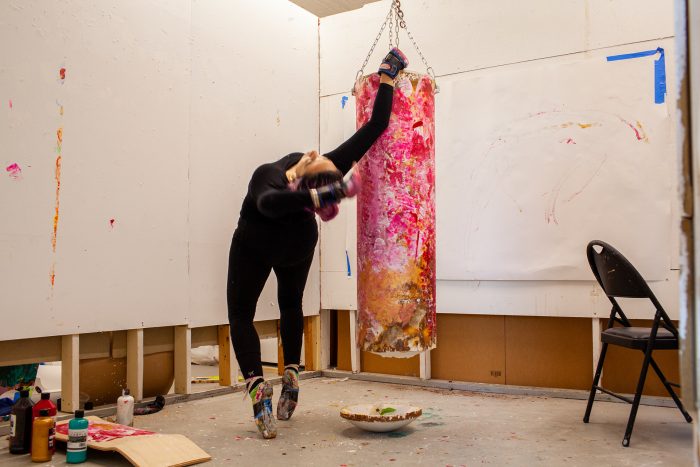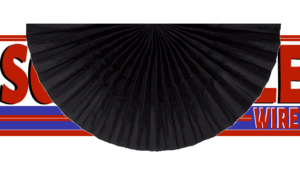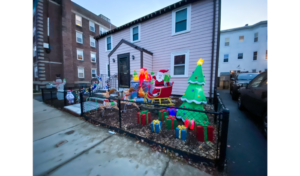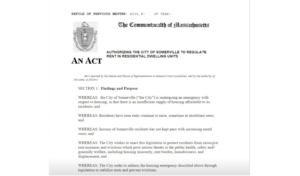The contemporary artist’s bold work defies limitations
(Somerville Wire) – Flor Delgadillo is an artist who works across media. Both a creator of visual and performative pieces, she is a lover of color who has explored painting with the body, developed installations that experiment with light, and used public space to present herself as a “faceless dancer,” blindfolded and accompanied by castanets. Delgadillo’s identity as a migrant from Mexico informs her work, as does her experience with epilepsy. This weekend, she will be face painting at the Somerville Arts Council’s Halloween celebration, SomerStreets: Monster Mash.
You are an interdisciplinary artist who works in painting, drawing, print, digital fabrication, performance, and video. How would you describe your creative processes, and what inspires you?
Growing up in the border city of San Diego and Tijuana, I am inspired by multicultural environments. I am also highly inspired by nature and the resilience of the human body. My practice explores the body as both a site and a machine. As an interdisciplinary artist, a primary part of my creative process involves exploring material. Having a big interest in material culture, I often work with charged objects. My process begins with exploring color and often natural reflections. I often work with repurposed or recycled materials. Digital fabrication often starts by sketching and as a result of problem solving a task. I am very inspired by repurposing technology. Fascinated by semiotics.
You have said that some of your performance work calls upon your training in boxing and ballet. How do you see these two disciplines as similar or different?
My performance highlights the body’s awareness of itself and its surroundings. Known to perform blindfolded, I explore movements that involve manipulating my senses and challenging our ambidexterity.
Regularly using mixed martial arts gloves along with ballet pointe shoes, I draw focus on the body and its muscle memory and flexibility. Both sports are arguably gender dominant ruling, boxing as a social archetype for masculinity, and ballet as a predominant feminine practice. Painting with both the tools that are symbols for each sport accentuates the discipline needed regardless of gender. Confronting movement and mobility that influence language in our social political reality by painting with the body.
What does it mean to you to be a migrant, having been born in Mexico, and does this identity play a role in your work?
Being a migrant plays a role in my identity and my work. Going to school in the U.S. and with Spanish being my first language, that became the first barrier I had to overcome. Language is very powerful, and in it there is culture that plays a role in our communication. To me, being a migrant in America means constantly being in a state of adapting.
My migration is best related to my “Birria bone series,” which communicates a connection between all bodies. The Birria bones are collected after a special dish traditionally made by one person in the family. The bones tell the story, while serving as a reminder of the domestic labor of women. Birria is a very labor-intensive dish, usually made in large quantities. Mexican recipes are also passed down orally. I began collecting the bones after each meal to honor each shared feast. In my house, my aunt is the keeper of the recipe, and she was recently diagnosed with M.S., which has decreased her mobility, making each meal memorable by allowing me to keep a piece of bone after the dish is done.
This playful experimentation with the bones calls to attention the other bodies it took to advance the medical industry, including the horrific history of medical experimentation and exploitation of women of color. The bones soak up every paint they touch, leaving traces of the bodies mobility. I think of how my body deteriorates with each performance and how the bones tell my story now and after I am unable to perform.
While my performance focus on the capabilities of the body, I also aim to create a better understanding of our mind and the different conditions that lead to communication through a verbal and/or nonverbal conversation.
I find public art to be a way to collaborate and or be in conversation with the community. Migration has taught me how to find community in moments of displacement.
You have written about being diagnosed with epilepsy at four years old and how “the idea of working with light seemed impossible.” Are there ways that having this condition has informed your work at all, both your visual work and performance art?
Having been diagnosed at a very early age, it was difficult with the existing technology.
At the time of my diagnosis, doctors could not anticipate knowing what environments could be unsafe. I use light as a recurring form of movement and often reflective surfaces to activate architecture and/or the space in which I install sculptures or video.
Being given a label meant needing routine tests and daily medication, and this invisible disability informs my work still. Having been subjected to the medical-industrial complex, I recently built my own functioning EEG, an Electroencephalogram that tracks and records brain wave patterns. Normal electrical activity in the brain makes a recognizable pattern. Through an EEG, doctors can look for abnormal patterns that indicate seizures and other problems. Using a 3D printer and open-source brain computer interface allowed me to reclaim my diagnosis.
What are you looking forward to about the SomerStreets: Monster Mash? Can you tell us a bit about the face painting that you’ll be doing there?
I am looking forward to being around community members. Prior to moving to Boston, I freelanced as a makeup artist and have experience with special effects makeup. I will be doing face painting for the guests of SomerStreets: Monster Mash. I look forward to more in person events after a long period of isolation.
This article is syndicated by the Somerville Wire municipal news service of the Somerville News Garden project of the Boston Institute for Nonprofit Journalism.
All Somerville Wire articles may be republished by community news outlets free of charge with permission and by larger commercial news outlets for a fee. Republication requests and all other inquiries should be directed to somervillewire@binjonline.org.
SUBSCRIBE TO THE FREE SOMERVILLE WIRE EMAIL NEWSLETTER: https://eepurl.com/hpBYPv
Check out all our social media here: https://linktr.ee/SomervilleWire.
Shira Laucharoen is assistant director of the Boston Institute for Nonprofit Journalism and assistant editor and staff reporter of the Somerville Wire.
